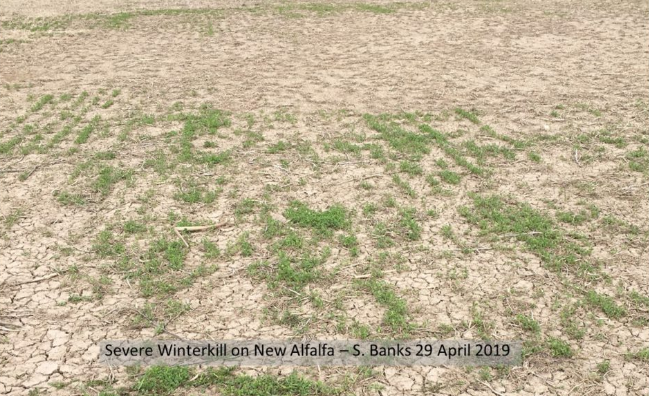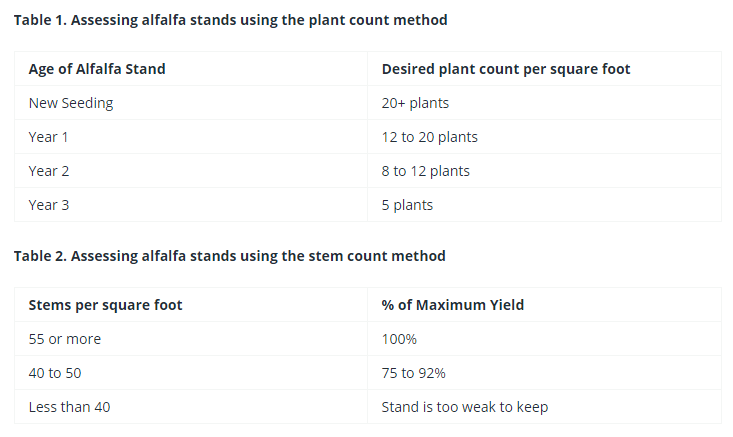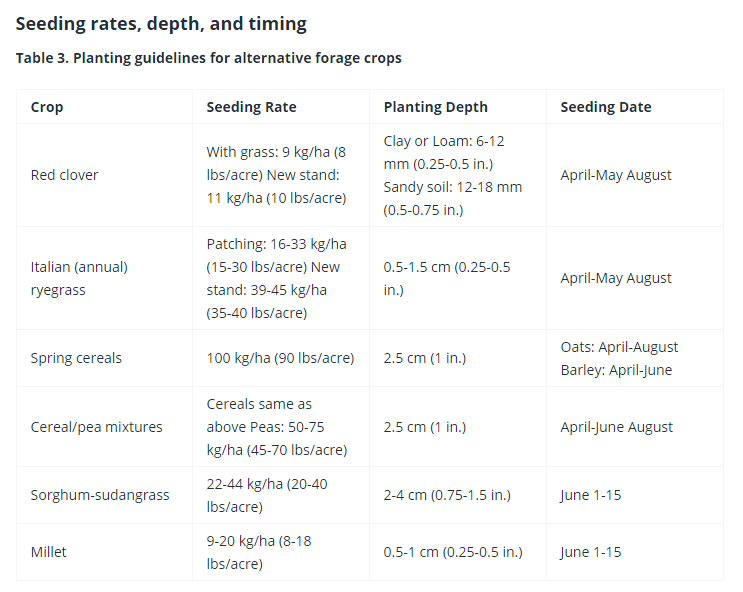
Reports indicate widespread alfalfa winterkill due to several thaws that reduced snow cover and created ice cover in fields. Producers need to scout their hay fields to assess the damage, then develop a plan to ensure they will have the forage they need.
Keep it, patch it, or start over?
Plant counts should be done in the spring and fall each year (Table 1). These can be done when the alfalfa is dormant. The spring count is a good time to dig up some plants and assess root health. Stem counts are useful for predicting yield potential, and these should be done when there is 15-20 cm (6-8 in.) of growth (Table 2). If the number of plants or stems per square foot is too low, consider patching to improve yields or rotating that field out of alfalfa.

Alfalfa is autotoxic, which means mature plants produce chemicals that prevent new alfalfa plants from establishing. Stands planted in 2018 will not have this autotoxic effect; however older stands will and cannot be patched with or followed by alfalfa.
In fields with less than 50% damage, growers could patch with red clover and/or grass (Italian ryegrass or typical perennial forage grasses). For best results, use a no-till drill. Once the alfalfa is over 15 cm (6 in.) tall, the established plants are generally too competitive for new seedlings to establish well. In this case growers may have better success taking a first cut and then over-seeding into moisture. Plan to terminate and rotate patched stands in 2020.
With the 2019 planting season barely started, producers have plenty of options to establish alternative forage crops to replace winterkilled alfalfa.

The seeding dates in Table 3 suggest timings that result in the best yield during a “normal” year. It is more important to wait until soil conditions are good for planting than following the calendar. Just like with other crops, when establishing forages it is important to get good seed-to-soil contact, uniform depth, and to plant into moisture. Keep in mind that warm-season grasses will not germinate until soil temperatures are at least 12°C.
Fertility for alternative forage crops
A winterkilled alfalfa stand provides a nitrogen credit to the following crop. This should be factored into the fertility plan to reduce the risk of nitrate toxicity from excess nutrients. To factor in nitrogen credits, subtract the appropriate credit from the crop nitrogen requirement. Some of the credits for alternative forage crops in Table 4 have not been validated by research, rather they are estimates based on similar crops with known responses to nitrogen from a previous legume crop.
Table 4. Nitrogen fertility guidelines for alternative forage crops following winterkilled alfalfa